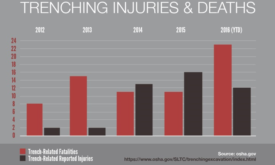News
From NIOSH Research Rounds
Healthcare workers perceive "cooler" safety climate
November 23, 2016
Wood chipper accident claims worker’s life
Company cited for lack of safety training
November 22, 2016
Ohio worker's death highlights grim statistic
Trench collapse fatalities have more than doubled in last year
November 21, 2016
Never miss the latest news and trends driving the safety industry
eNewsletter | Website | eMagazine
JOIN TODAYCopyright ©2024. All Rights Reserved BNP Media.
Design, CMS, Hosting & Web Development :: ePublishing









